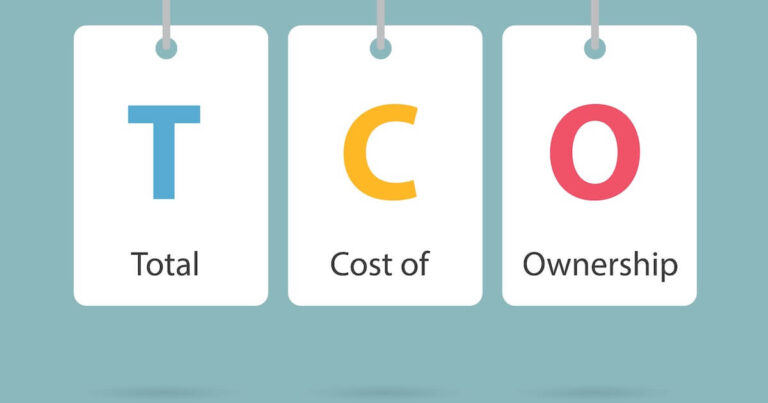The rapid adoption of public cloud services requires companies of all sizes to define their cloud governance needs. Although it is easy to get into the cloud, power up virtual machines (VMs), arrange storage, and run applications or other workloads, companies are faced with the problem of not being able to understand what resources are being used for what purpose and how each is connected to the business.
While promises like economies of scale, faster times to market, and a greater focus on business value are tempting, organizations often realize how easily they can lose track of their workloads. Tagging cloud resources helps enterprises efficiently manage, identify, organize, search and filter information by group or value. Tags can help classify resources based on purpose, owner, environment, or other criteria that further bring visibility, allocation, cost reporting, accountability, compliance, and more feasibility.
Tagging cloud resources is key to your cloud governance initiatives. Organizing cloud assets according to enterprise needs, such as organization structure, financial accounting practices, and application needs, is critical. For example, resources can be tagged by the environment, department, application name, cost center, etc. Look below at best practices for tagging cloud resources and getting the most out of cloud spending.
Why Your Cloud Environments Need a Tagging Strategy
Hybrid or multicloud are becoming everyday occurrences in an Enterprises environment for serving various needs, such as: choosing best-of-breed cloud services, minimizing risks, and avoiding vendor lock-in. Being open to a well-defined multi-cloud strategy, enterprises take advantage of pricing competition among cloud providers to increase cost efficiency. Multi-cloud strategy keeps the option always available to select the right size cloud service for your needs. However, multi-cloud offers opportunities and challenges in terms of cost for enterprise customers. Cloud providers in a high availability architecture will incur higher bandwidth costs, negating some of the cost benefits of multi-cloud.
Another factor that has been a challenge for enterprise IT is cloud sprawl. The problem is compounded in multi-cloud with cloud consumption spread across multiple services. As cloud services expand, turning off unused services is vital to ensure cost efficiency. So, here are the reasons why you need a ‘tagging’ strategy in multi-cloud:
1. Gain Complete Cost Visibility
As enterprises navigate this multi-cloud journey, the lack of visibility becomes a more significant challenge. This seriously affects their ability to innovate while remaining secure, compliant, and cost-effective. The need to organize and maintain standardized resource clusters is imminent, with multiple resources deployed in different regions, etc., in a multi-cloud setting. IT needs complete visibility and a better alert mechanism to control cloud service expansion and cost efficiency. Implementing a coherent ‘tagging’ mechanism helps enterprises gain visibility into cloud spending and thus addresses the spread of arrests.
2. Enable Efficient Cost Monitoring
Each cloud provider offers its monitoring tool. Although those tools are comprehensive enough and offer visualization of the various services offered by a cloud provider, but that isn’t effective in a multi-cloud setup. In the same way, first-generation cloud management tools offer limited features to handle multi-service and multi-cloud scenarios. Their monitoring tools are too primitive to meet the needs of today’s cloud observability challenges. A well-defined tagging mechanism enables high efficiency through a single window of monitoring cost.
3. Provide Accurate Cost Reporting and Analytics
Regarding cost reporting, enterprises struggle to associate costs with technical or security dimensions, such as specific applications, environments, or compliance programs. Enterprises can use predictive analytics to analyze usage patterns of cloud resources and estimate costs across cloud accounts, tags, regions, and user groups. They can also get essential recommendations on optimizing cloud resources, thus avoiding cost leakage.
4. Utilize Intelligent Automation
Automation is significant to ensure high availability and flexibility in the cloud. All enterprises now use scripts to run various automation templates. Still, the challenge comes when you deploy such scripts to a specific set of resources allocated to a particular group. In the above scenarios, the recommended approach is to implement a coherent set of global tags to effectively collect actionable data insights by providing helpful information to any resource within your cloud infrastructure.
Best Practices Of Implementing Cloud Tagging
A disciplined tagging policy is the cornerstone of solid cloud governance. A well-crafted approach for resource tagging and automated tag sanitation will strengthen visibility, accountability, cloud cost reporting and optimization, and management for seamless operations.
1. Global Policy
A centralized IT team should own the process and continuously define the global tagging policy by taking feedback from key stakeholders. Successful tagging begins with communication between key stakeholders. Your stakeholders could have questions about cloud resources, security, and costs. Therefore, you must identify who these people are because they are your primary executors. You should explain to them the need for tags and ensure that all teams are on the same page. Your obvious stakeholders include application owners, DB admins, process owners, IT finance, disaster recovery team, security, cloud FinOps, and cloud platform owners. Communication and stakeholder buy-in is essential for successful results from your cloud tagging strategy.
2. Consistent Reporting
The rapid rise in cloud usage comes with the need to keep track of what is happening in the cloud infrastructure while it is constantly changing. That’s where consistent and comprehensive tags come in handy to help with reporting cost, usage, availability, performance, and security. These reports help show the current status of tagging efforts and allow enterprises to track improvements within tag coverage.
3. Automated Alerts
Create daily automatic alerts for missing tags. Any resources that do not have tags should be reported daily via automatic alerts. This visibility is essential for effective tag management and resource consistency.
4. Automated Process
Focus on automating the tagging processes. Once a tagging strategy is implemented and standardized, the tagging process should be automated. Use scripts to generate alerts on unavailable or tagless resources and enforce the correct use of tags. To standardize tags, automated scripts can be used to correct tag names according to pre-defined parameters.
Conclusion
Tags can be based on different types depending on the tagging strategy. It has been observed that business-relevant tag groups are very effective as they help to organize resources along business, technical and security dimensions. Additionally, automation-specific tags can add even more value. An effective tagging strategy can help an enterprise gain visibility and insight into cloud consumption, cost, and resources, ultimately empowering decision-making and cloud cost optimization.




